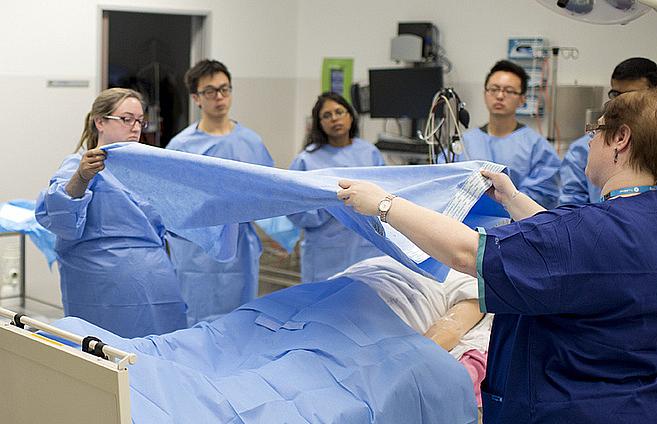Herd Immunity: Health care could save big by investing in safety tracking

Spending money to track hospital-acquired infections and complications could save money in the long run (Monash University/Flickr).
If health care collectively wastes 30 cents out of every dollar on preventable complications, think about the possibilities.
Even just a nickel of that wasted spending could make a mountain of difference. That’s what patient safety experts testified at a Senate hearing this summer.
One of the simplest ideas is to give one agency (the CDC) an expanded portfolio, making patient safety an even higher priority than it is currently.
A bit of background.
The CDC set up the National Healthcare Safety Network (NHSN) in 2005, asking health care providers to voluntarily report their healthcare-associated infections following a standard set of metrics. The system, right now, is anonymous, which irks some patient safety advocates. But, at a minimum, it provides a data collection and tracking mechanism that previously was unavailable. This has led to some great new academic work and some eye opening news stories.
See Also: When will the U.S. Senate take patient safety seriously?
In 2013, for example, Dr. Eyal Zimlichman of Brigham and Women’s Hospital in Boston and colleagues published a study in JAMA Internal Medicine that linked the infection rates tracked in NHSN to costs. They found that hospitals collectively spend -– meaning waste -- $9.8 billion every year just on healthcare-acquired infections.
Which infections were the most expensive? Central line-associated bloodstream infections at $45,814 per case. Considering that a surgery such as a hip replacement can cost as little as $11,000, this means that one infection could end up costing four times the cost of the surgery.
A close second was ventilator-associated pneumonia at $40,144. Then it was a steep drop off to surgical site infections, which were still quite costly at $20,785 a pop, nearly twice the cost of a hip surgery. Clostridium difficile infections cost $11,285 per incident, and catheter-associated urinary tract infections cost $896.
Is NHSN working? It’s hard to tease out, but the general focus in the last decade on lowering infection rates is starting to make a difference. Since the creation of NHSN in 2005, there has been a decrease in infection rates. Those central-line infections that are so costly? They fell by 44 percent between 2008 and 2012, according to the CDC’s 2013 National and State Healthcare Associated Infections Progress Report. There also was a 20 percent decrease in infections related to 10 surgical procedures during that same period.
To build on that momentum, why not expand NHSN’s mission? That’s what Dr. Ashish K. Jha, professor of health policy and management at Harvard School of Public Health, recommended to senators last month. She testified:
The 2012 NHSN budget was just $19 million, and with small additional funding, NHSN could expand its monitoring efforts beyond infections to other types of adverse events. The resources required would be small change compared to the potential savings to the Medicare program.
Consider blood clots, Jha suggested. All the many healthcare-acquired infections combined cost $9.8 billion every year. But blood clots alone cost the healthcare system as much as $10 billion per year, according to the CDC. Other estimates have put the costs at $5 billion, which is still staggering.
Jha testified that the savings would be worth the increased funding in NHSN:
If expanded efforts by the CDC reduced the incidence of blood clots by just 1 percent, our country would save between $50 million and $100 million annually, not to mention the benefit of increased health for our citizens. This is an opportunity for us to make a small investment that is likely to have huge returns and pay for itself over time.
The CDC already is expanding NHSN into new areas. Before the Senate hearing, CDC Director Dr. Tom Frieden announced that the CDC was using the NHSN to create the world’s first antibiotic prescribing index.
This index will help benchmark antibiotic use across health care facilities for the first time, allowing facilities to compare their data with similar facilities. It will help facilities and local and state health departments as well as CDC to identify hot spots within a city or a region. We’ll be able to answer the questions: Which facilities are prescribing more antibiotics? How many types of resistant bacteria and fungi are they seeing? Do prescribing practices predict the number of resistant infections and outbreaks a facility will face? Ultimately with this information, we’ll be able to both improve prescribing practices and identify and stop outbreaks in a way we have never done before.
In theory, NHSN could be used to track many more preventable medical errors the same way. I’ll write about more ideas that are now part of the congressional record later in the week.
